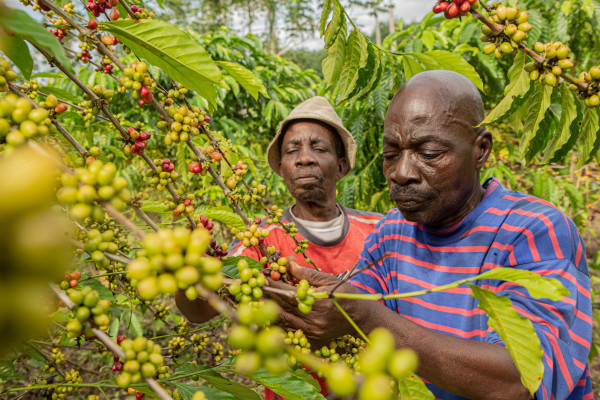Nescafé, Nestlé’s largest coffee brand and one of the world’s favourite coffees, has outlined its extensive plan to help make coffee farming more sustainable: the Nescafé Plan 2030. The brand is working with coffee farmers to help them transition to regenerative agriculture while accelerating its decade of work under the Nescafé Plan.
The brand is investing over one billion Swiss francs by 2030 in the Nescafé Plan 2030. This investment builds on the existing Nescafé Plan as the brand expands its sustainability work. It is supported by Nestlé’s regenerative agriculture financing following the Group’s commitment to accelerate the transition to a regenerative food system and ambition to achieve zero net greenhouse gas emissions.
Climate change is putting coffee-growing areas under pressure. Building on 10 years of experience with the Nescafé Plan, we’re accelerating our work to help tackle climate change and address social and economic challenges in the Nescafé value chains.
Rising temperatures will reduce the area suitable for growing coffee by up to 50 per cent by 20501. At the same time, around 125 million people depend on coffee for their livelihoods2 and an estimated 80 per cent of coffee-farming families live at or below the poverty line3. Action is needed to ensure the long-term sustainability of coffee.
As the world’s leading coffee brand, Nescafé aims to have a real impact on coffee farming globally. We want coffee farmers to thrive as much as we want coffee to have a positive impact on the environment. Our actions can help drive change throughout the coffee industry.
Supporting farmers’ transition to regenerative coffee farming
Regenerative agriculture is an approach to farming that aims to improve soil health and fertility – as well as protect water resources and biodiversity. Healthier soils are more resilient to the impacts of climate change and can increase yields, helping improve farmers’ livelihoods.
Nescafé will provide farmers with training, technical assistance and high-yielding coffee plantlets to help them transition to regenerative coffee farming practices. Some examples of regenerative agriculture practices include the following:
- Planting cover crops helps to protect the soil. It also helps add biomass to the soil, which can increase soil organic matter and thus soil carbon sequestration.
- Incorporating organic fertilizers contributes to soil fertility, which is essential for good soil health.
- Increasing the use of agroforestry and intercropping contributes to biodiversity preservation.
- Pruning existing coffee trees or replacing them with disease and climate-change-resistant varieties, will help rejuvenate coffee plots and increase yields for farmers.
Focusing on origins from where Nescafé sources 90 per cent of its coffee Nescafé will be working with coffee farmers to test, learn and assess the effectiveness of multiple regenerative agriculture practices. This will be done with a focus on seven key origins, from which the brand sources 90 per cent of its coffee: Brazil, Vietnam, Mexico, Colombia, Côte d’Ivoire, Indonesia and Honduras.
Nescafé aims to achieve:
100 per cent responsibly sourced coffee by 2025
20 per cent of coffee sourced from regenerative agricultural methods by 2025 and 50 per cent by 2030 as part of Nestlé’s ambition for its key ingredients


